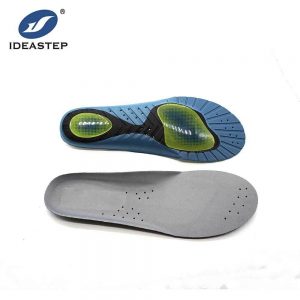A heel spur is a calcium deposit causing a bony protrusion on the underside of the heel bone.
What is a Heel Spur
Heel spurs are especially common among athletes whose activities include large amounts of running and jumping. In most cases, heel spurs are painless, but they do cause heel pain and are often associated with plantar fasciitis. The treatments recommended by doctors for heel spurs are exercise, custom-made orthotics, anti-inflammatory medications, and cortisone injections, or even surgery.

A heel spur
What causes heel spurs?
Heel spurs occur when calcium deposits build up on the underside of the heel bone, a process that usually occurs over a period of many months. Heel spurs are often caused by strains on foot muscles and ligaments, stretching of the plantar fascia, and repeated tearing of the membrane that covers the heel bone.
The common causes are listed as follows.
– Abnormal walking strides, placing too much stress on the heel bone, ligaments, and nerves near the heel;
– Running, jumping, jogging on hard surfaces;
– Uncomfortable shoes without necessary arch support
– Excessive body weight and obesity
– Other risks not necessarily leading to heel spurs include:
A.) Increasing age with decreased plantar fascia flexibility
B.) Diabetes
C.) Standing too time per day
D.) Frequent short bursts of physical activity
E.) Suffering from either flat feet or high arches

Ideastep #KS1898 with TPE gel for heel shock absorption
Symptoms of Heel Spurs
Usually, there are no obvious symptoms. But heel spurs can be associated with intermittent or chronic pain — especially while walking, jogging, or running. Generally speaking, it is not the heel spur itself that causes foot pain, but the soft-tissue injury. The pain is often described as a knife or pin sticking into the bottom of their feet suddenly, and then into a dull ache. And that pain comes again when standing up after sitting or resting for some time.
Non-Surgical Treatments for Heel Spurs
If you suffer from heel pain for more than one month, please do consult with a doctor. They may recommend conservative treatments such as:
– Stretching exercises
– Shoe recommendations
– Taping or strapping to rest stressed muscles and tendons
– Shoe inserts or orthotic devices with heel shock absorption
– Physical therapy
– Night splints

Ideastep #KS31104 insoles with Sticky Gel pads in Heel
Prevention of Heel Spurs
As we discuss the causes of heel spurs, here are some ways to prevent them.
– wearing well-fitting shoes with shock-absorbent soles, rigid shanks, and supportive heel counters;
– choosing appropriate shoes for each physical activity;
– warming up and doing stretching exercises before each activity;
– losing weight, if you are overweight
Hot blogs:
The Easiest Custom Insoles: Heat Moldable Insoles
Custom insoles, also known as orthotic insoles, are designed to provide personalized support and comfort for individuals with various foot conditions. In [...]
Children’s Insole Size Conversion Chart
The standard sizes for shoe insoles may vary from country to country, making it a headache to choose the right insole for [...]
Do custom orthotics need to be made by a doctor personally?
Custom orthotics do not necessarily need to be made by a doctor personally. While doctors, specifically podiatrists or orthopedic specialists, are often [...]
Do NBA players use custom insoles?
Custom insoles are not only helpful for people with foot health issues, but they also play a significant role in targeting the [...]
